Acids and Bases
Acids and bases are important concepts in chemistry. They are found in many everyday substances and have a wide range of uses.
Definitions
An acid is a substance that donates hydrogen ions (H+) in a chemical reaction. Acids have a sour taste and can be corrosive.
A base, also known as an alkali, is a substance that accepts hydrogen ions (H+) in a chemical reaction. Bases have a bitter taste and are slippery to the touch.
pH Scale
The pH scale is used to measure the acidity or alkalinity of a substance. It ranges from 0 to 14, with 7 being neutral, lower numbers indicating acidity, and higher numbers indicating alkalinity.
Common Acids and Bases
Common acids include citric acid (found in citrus fruits), hydrochloric acid (found in the stomach), and acetic acid (found in vinegar). Common bases include sodium hydroxide (found in drain cleaners), ammonia (found in cleaning products), and sodium bicarbonate (baking soda).
Acid-Base Reactions
When an acid and a base react, they form water and a salt. This type of reaction is called a neutralization reaction.
Study Guide
.◂Science Worksheets and Study Guides Fifth Grade. Science Worksheets: Acids and bases
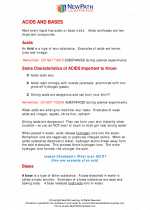
 Activity Lesson
Activity Lesson
 Worksheet/Answer key
Worksheet/Answer key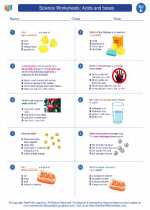
 Worksheet/Answer key
Worksheet/Answer key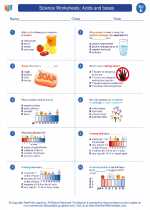
 Worksheet/Answer key
Worksheet/Answer key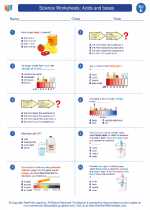
 Worksheet/Answer key
Worksheet/Answer key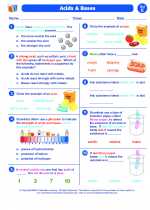
 Vocabulary/Answer key
Vocabulary/Answer key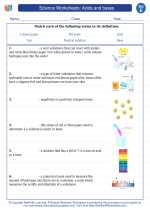
 Vocabulary/Answer key
Vocabulary/Answer key
